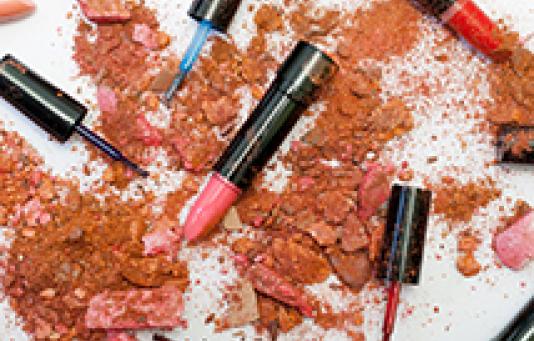Sources of Lead Exposure
Information on where and how you can get lead poisoning
Lead can be found in many places in and around a child’s home, including in the paint, air, soil, water. Lead-based paint and lead dust are the main sources of lead poisoning in New Hampshire. Houses and apartment buildings built before 1978 are likely to have lead-based paint.Other sources of lead exposure include toys and jewelry, workplace and hobby hazards, imported spices, baby food, lead glazed ceramic ware (slow cookers), pottery, and leaded crystal, traditional home remedies and cosmetics, target practice (indoor and outdoor firing ranges) and DIY home renovations and repairs completed in pre-1978 buildings not using lead-safe work practices.

Lead Paint
Homes built before 1978 may contain lead paint. Lead paint was banned from residential use in 1978. While not all lead-based paint is a lead exposure hazard, the condition or location of lead paint is what puts a child at risk for lead poisoning. To learn more, read the Lead Hazards fact sheet below or visit the CDC website.
- Lead Hazards (English)
- المواد الملوثة بالرصاص (Arabic)
- लिडका जोखिम तत्िहर (Nepali)
- Riesgos de exposición al plomo (Spanish)

Drinking Water
Lead is rarely found in water before it enters your home, but the plumbing in your home could be contributing lead to the water you drink. Lead is most likely to be found in your water first thing in the morning after the water sits in the pipes all night, or any length of time where it sits more than six hours. To learn more, read the Lead in Drinking Water fact sheet below or visit the CDC website or EPA website.

Home Renovations
Before embarking on a DIY project in your home, it is very important to know you will be disturbing lead paint. Simple test kits are available at your local hardware store or you can hire a licensed professional. It is important to understand that DIY does not apply to landlords; landlords who choose to do work themselves on their rental properties must, as a matter of law, comply with Federal EPA Renovate, Repair, and Paint (RRP) laws. In order to work on their own rental properties, landlords must be RRP certified or hire an RRP certified contractor. For more advice for DIYers, visit the Lead-FreeNH website.

Baby Food
News about heavy metals found in baby food can leave parents with a lot of questions. The American Academy of Pediatrics has current information about the risk of toxic metal exposure to children, and how to help minimize it. Visit the HealthyChildren.org website today.

Soil
The only way to know if there is lead in your soil is to get it tested. Lead-contaminated soil continues to be a hazardous source of lead exposure for young children in the NH. Deposits from leaded gasoline, exterior lead-based paint, and industrial sources have contributed to increased levels of lead in the soil. This is especially common in urban areas and homes built before 1978. Read our Lead in Soil fact sheet to learn more or visit the CDC website

Jobs, Hobbies, and Other Activities
Some adults work in industries or have hobbies that expose them to lead. These adults may bring lead home with them and expose their families to lead without knowing. This dust can be tracked onto carpets, floors, furniture, and other surfaces that a child may touch. Learn more by reading the Take Home Lead fact sheet below or visiting the CDC website.

Toys
Some toys, especially some imported toys, antique toys, and toy jewelry may contain lead. If you have a small child in your household, make sure the child does not have access to toys, jewelry, or other items that may contain lead. Learn more by reading this Toys and Childhood Exposure fact sheet or visiting the CDC website.

Cosmetics
Lead has been found in products typically used as cosmetics or in religious ceremonies. Children and adults have been exposed to high levels of lead by ingesting a product generically called “sindoor.” Though not intended to be food, sindoor might be used by some as a food additive. Traditionally, Hindu, and some Sikh, married women wear the red sindoor powder in the parting of their hair to indicate marital status. Products such as kohl, kajal, and surma can also contain lead. Learn more by visiting the US Food and Drug website.

Spices, Herbal Remedies, and Candy
Lead has been found in candies and some powders and tablets given for arthritis, infertility, upset stomach, menstrual cramps, colic, and other illnesses traditionally used by East Indian, Indian, Middle Eastern, West Asian, and Hispanic cultures. Learn more by reading this Spoonful of Lead fact sheet or visiting the CDC website.

Shooting Ranges
Indoor firing ranges are popular among law enforcement and recreational shooters because they offer protection from inclement weather conditions and can be operated around the clock under controlled environmental conditions. However, many firing range facilities lack environmental and occupational controls to protect the health of shooters and range personnel from effects of airborne lead, noise, and other potential exposures. Learn more by watching this video title ‘You Like to Shoot? Lead Poisoning 101 or visiting the CDC website.



